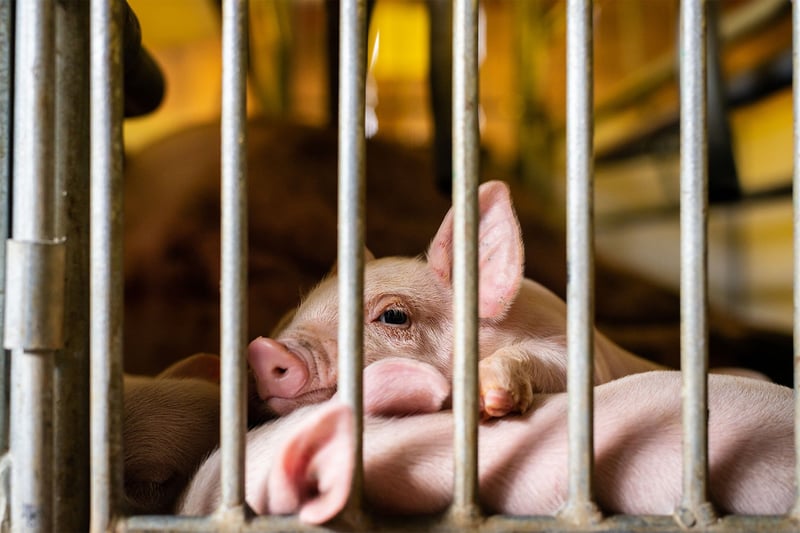
What is a superbug? And how does this impact us? Scientists have confirmed the unstoppable spread of superbugs travels from pig to human.
Firstly, what is a superbug?
A superbug is a germ that has developed the ability to become resistant to commonly used antibiotics – this is called antimicrobial resistance (AMR).
In factory farms around the world, antibiotics are routinely given to herds of healthy animals through their food or water to prevent and control diseases and illness. So, you may be thinking, surely giving antibiotics to stop them getting sick is a good thing? But the answer is a resounding no, not if used excessively. In fact, antibiotic overuse in factory farming leads to the development of superbugs.
According to a recent study, extremely harmful mutations of a superbug can be spread from pigs to humans. Dr Semeh Bejaoui says this is a clear indication that the overuse of antibiotics in factory farms is “undoing our ability to cure bacterial infections” in both animals and humans. With pigs being one of the most intensively farmed species on the planet, this is a very worrying discovery.
The two main ways antimicrobial resistant bacteria can be transmitted to humans are through the environment and food products.
Let’s first look at the environment. It is estimated that animals excrete up to 90% of the antibiotics given to them in their urine and faeces, and bacteria can survive in untreated farm animal waste for up to a year1.
The animal waste is very often then spread on land for use as a fertiliser or discharged into public water ways. As these antibiotics pass through the animals and into the environment via manure, they speed the evolution of AMR bacteria in soil and water.
Now onto food products. Since antibiotics are generally given to an animal through their food, superbugs may still be present in the animal’s gut when it goes to slaughter. This means that when a human ingests the meat product, they are in effect ingesting the bacteria.
The World Health Organisation (WHO) strongly recommends an overall reduction in the use of antibiotics on animals, as AMR is “one of the top 10 global public health threats facing humanity”2 . Even now, over 1 million people die each year from superbugs, and by 2050, approximately 10 million people are expected to die every year3.
Instead of fixing the root cause of the issue, which are the horrific conditions that these poor animals are forced to endure, the factory farming industry is increasingly relying on the use of antibiotics to act as a band-aid to stop animals becoming sick; each year 131,000 tonnes of antibiotics are given to stressed animals4.
By moving to high animal welfare systems, animals will be exposed to less stressful environments and their resilience to disease will improve, requiring fewer antibiotics.
For the sake of animal welfare, human health and the planet it’s time to Say Yes To Less factory farming and help us put an end to it.
Make a difference. Join our community.
We campaign to improve animals' lives in the UK and around the world. Why not join us today?
Blog author:
Annie Evans, UK Campaign Officer.
References
1. Bonnie M. Marshall and Stuart B. Levy, 2011. Food Animals and Antimicrobials: Impacts on Human Health. Available at: https://www.ncbi.nlm.nih.gov/pmc/articles/PMC3194830/
2. World Health Organisation. n.d. Ten threats to global health in 2019, Accessed: 5th May 2022 from https://www.who.int/news-room/spotlight/ten-threats-to-global-health-in…
3. Christopher JL Murray et al. 2022. Global burden of bacterial antimicrobial resistance in 2019: a systematic analysis. Available at: https://www.thelancet.com/action/showPdf?pii=S0140-6736%2821%2902724-0
4. World Animal Protection, 2020. Fuelling the pandemic: Factory farming and the rise of superbugs. Available at: https://www.worldanimalprotection.org/sites/default/files/2021-06/Fuell…
Image credits: Blog post listing: CDC/Unsplash; blog post: World Animal Protection